Network of HBTSS and PWSA satellites: distributed fighter can become a tool for gaining absolute air superiority
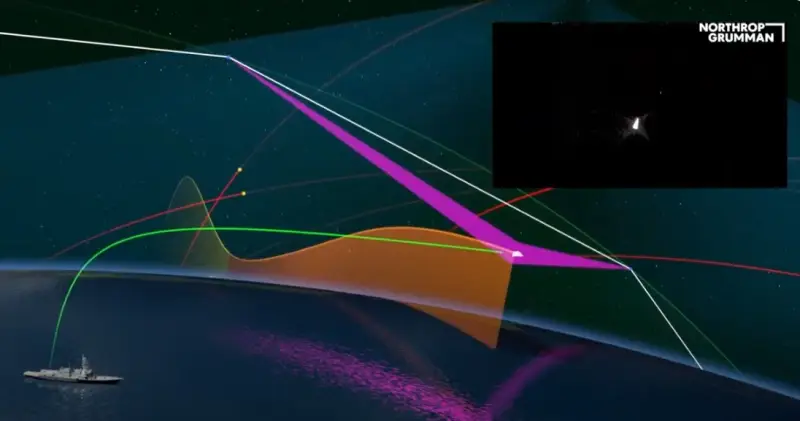
We have already spoken about the importance of outer space for future wars more than once, for example, in the materials "Critical systems that provide strikes with long-range precision-guided munitions" и "Look beyond the horizon: orbital reconnaissance and strike echelon".
It is difficult to say which of the above has been implemented or is planned for implementation in Russia - everything is shrouded in secrecy here, but in the USA work in this direction is being carried out very actively, it is possible that some of the forecasts regarding the deployment of some segments of the orbital reconnaissance and strike echelon will come true much earlier than expected.
HBTSS and PWSA
On February 4, 2024, the US Space Development Agency (SDA) and the US Missile Defense Agency (MDA) launched six artificial satellites into Earth orbit, including two HBTSS (Hypersonic and Ballistic Tracking Space Sensor) satellites. hypersonic and ballistic tracking"), designed to track hypersonic and ballistic missiles, as well as other complex air targets, and four PWSA (Proliferated Warfighter Space Architecture) satellites.
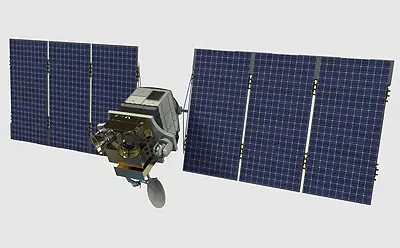
HBTSS Satellite Image L3Harris
It would seem that there is nothing new - an “expanded and expanded” version of the orbital echelon missile attack warning systems? However, in reality everything is much more complicated.
The US Missile Defense Agency initiated the development of HBTSS satellites in 2018, and L3Harris Technologies Inc. was selected as the satellite's developers and creators. and Northrop Grumman Corporation. It is expected that the full constellation of HBTSS satellites, which should be deployed before the end of 2026, will allow tracking of hypersonic and ballistic missiles throughout their flight, from launch to destruction using interceptor missiles. Such capabilities will allow anti-missile defense (ABM) systems to launch anti-missile missiles even before the target enters the radar coverage area.
In turn, PWSA satellites are part of a large-scale orbital system, which includes the so-called “layers” - transport (communications), sensor (intelligence), presumably, there will also be a navigation layer. In 2023, 23 PWSA satellites were launched into orbit, taking into account the newly launched ones, their number will be 27 satellites; by the end of 2024, it is planned to launch another 160 satellites into orbit, and in the future the constellation will include about a thousand satellites interconnected by high-speed laser transmission channels data like the latest Starlink satellites.
In principle, the PWSA satellites themselves are capable of detecting hypersonic missiles, but their WFOV (Wide-field of View) infrared (IR) sensors do not appear to provide the accuracy necessary to intercept the high-speed targets for which they were launched HBTSS satellites equipped with IR sensors with a medium field of view (MFOV).
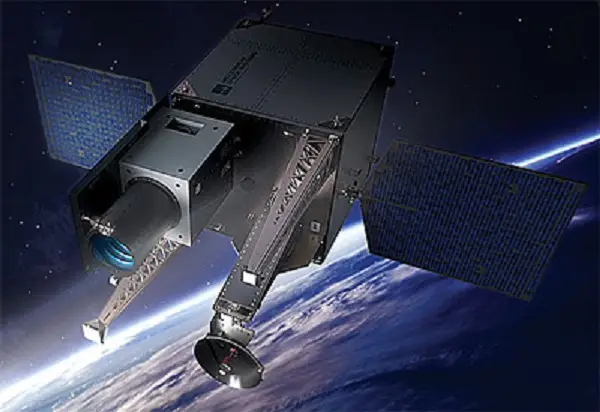
An experimental satellite with an IR sensor with a wide field of view. Boeing image
According to Space Development Agency technical director Frank Turner, the HBTSS and PWSA satellites will be the first to have the ability to directly control ground and surface (and possibly even aviation) weapons systems.
The question is, what types of targets can HBTSS and PWSA satellites detect and track?
Goal types
As part of the HBTSS and PWSA satellite programs, they must detect hypersonic and ballistic missiles, as well as other types of targets. What is hidden under the word “others”?
Detection and tracking of targets is carried out by the HBTSS and PWSA satellites using IR sensors, respectively, it is their sensitivity that determines the satellites’ ability to detect targets. It is clear that both hypersonic and ballistic missiles at the initial stage of flight have a powerful IR emission from the rocket engine plume; there is nothing new here; our early warning satellites detect them in a similar way.
For HBTSS and PWSA, the ability to accompany hypersonic and ballistic missiles throughout the flight path, including tracking, is declared planning hypersonic warheads, in which, after separation from the carrier, only weak maneuvering engines operate (if they exist at all, and aerodynamic controls are not used).
True, gliding hypersonic warheads become very hot when descending in the Earth’s atmosphere; according to open data, the temperature of their skin can reach one and a half to two thousand degrees, but only in individual, narrow sections of the body, which is already significantly less than the jet engine torch of a launching rocket.
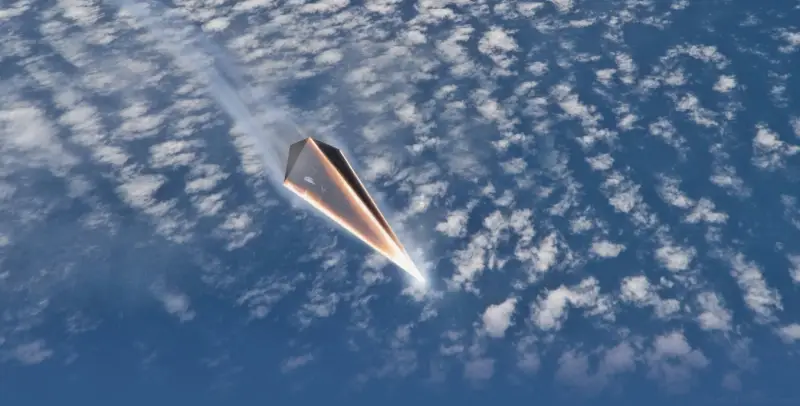
Glide hypersonic warheads should glow in the infrared range much weaker than the torch of a rocket engine. Image by DARPA
The question is that for the HBTSS and PWSA satellites it is declared that they can track hypersonic and ballistic missiles precisely along the entire flight path, and the same gliding hypersonic warheads immediately after separation from the carrier should have a fairly small IR signature, the same applies to ballistic missiles in the middle part of the trajectory, when they move in the most rarefied atmosphere.
It can be assumed that the IR sensors of the HBTSS and PWSA satellites have a sufficiently high sensitivity, which provides them with the ability to detect even fairly cold targets. In addition, the HBTSS and PWSA satellites are located in orbits at an altitude of about 1 kilometers, which is significantly lower than the 000 kilometers of older early warning satellites in geostationary orbit and designed only to detect the launch of intercontinental ballistic missiles (ICBMs).
Apparently, the network of HBTSS and PWSA satellites is initially designed not only for strategic systems, such as ICBMs or gliding hypersonic warheads of the Avangard type, but also for operational-tactical missiles, such as Zircon, Kinzhal and the like . But if so, then the network of HBTSS and PWSA satellites will probably see Iskander missiles, Kh-22 and Kh-32 aeroballistic missiles, anti-ship missiles (ASM) of the Onyx, Granit, Basalt and Vulcan types "
Northrop Grumman HBTSS and PWSA Satellite Network Presentation
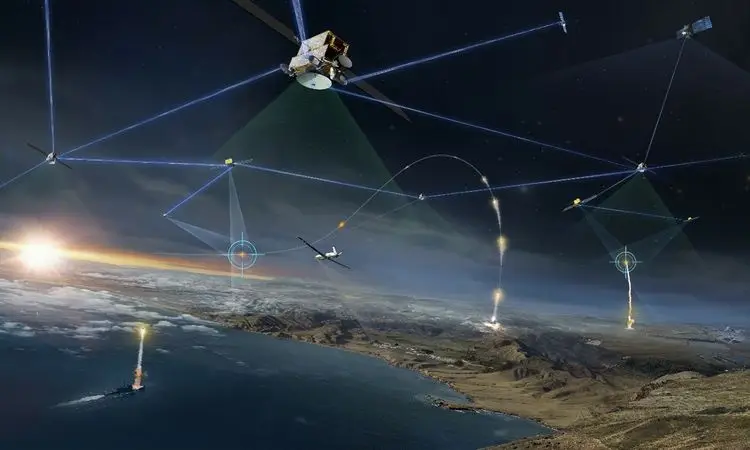

By interacting with each other, the HBTSS and PWSA satellites will ensure tracking of targets along their entire flight path, right up to the moment of destruction. Image by Northrop Grumman
Most likely, low-flying cruise missiles of the Caliber complex will be able to avoid detection from space (for now) as well as similar aviation strategic cruise missiles of the X-101/102 type with their economical small-sized turbojet engines (TRD). However, the question of their detection or non-detection also lies in the area of conjecture and assumptions, since the characteristics of the HBTSS and PWSA satellites are classified.
Based on the above, it is highly likely that the network of HBTSS and PWSA satellites is capable of detection from space and jet aircraft. The only question is what types and at what altitudes.
For example, in a jet aircraft, the temperature in the combustion chamber reaches 1–500 degrees Celsius, the temperature of the exhaust gases of a bypass turbojet approaches 2 degrees Celsius, of course, the volume of ejected jet mass will also matter, in addition, the airframe in the engine area heats up , the turbojet nozzles glow.
First of all, aircraft such as heavy strategic missile-carrying bombers Tu-160/Tu-160M and long-range missile-carrying bombers Tu-22M3/Tu-22M3M with their powerful turbojet engines fall into the risk zone. Following them are transport aircraft, such as the An-124 and Il-76, as well as vehicles based on them - early warning and control aircraft (AWACS), tanker aircraft and others.
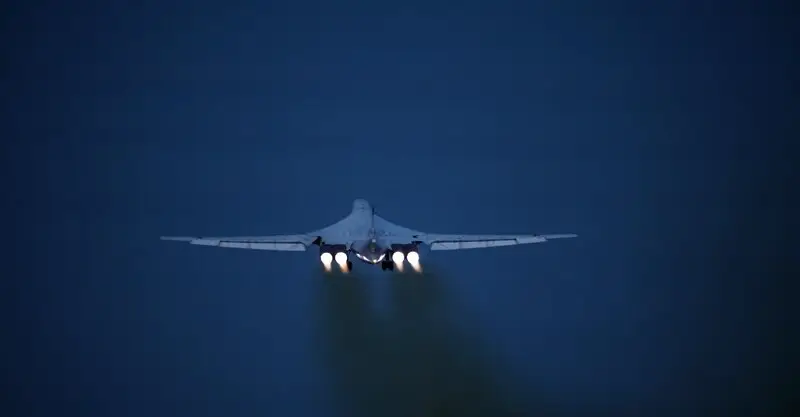
It can be assumed that the Tu-160’s afterburner could also detect old early warning satellites. Image by the Russian Ministry of Defense
What's next?
And then come the MiG-31 interceptor fighters, Su-35C multirole fighters, Su-34 front-line fighter-bombers and other combat vehicles, also equipped with fairly powerful and hot turbojet engines. Aircraft with turboprop engines are in question, for example, Tu-95MS/MSM strategic missile-carrying bombers, transport and combat helicopters, that is, we are gradually approaching the lower level - low-flying cruise missiles.
Of course, in many respects all of the above assumptions are guesswork, since the author has no data on the sensitivity of IR sensors, but given the progress in the development of IR technologies, as well as the fact that the United States is the undisputed leader in this direction, it is possible It is with great confidence that the network of HBTSS and PWSA satellites provides detection of not only hypersonic and ballistic missiles, but also supersonic operational-tactical missiles, as well as aircraft with powerful turbojet engines.
If this is not implemented in the current satellite package, it will certainly appear in future iterations. We can also confidently assume that the United States will not be able to detect from space such aircraft as unmanned aerial vehicles (UAVs) - kamikazes of the Geranium-2 type, as well as aircraft with an electric engine; everything else, a little hotter, is at risk .
Threats and prospects
Currently, the United States is the clear leader in space exploration, including its use for military purposes, with China breathing down its neck. As for Russia, it’s too early to say - there seems to be some kind of movement lately, but where it will lead us is unknown...
Before our eyes, a revolution is taking place in the exploration of outer space and the impact it has on life, and now death, on planet Earth. Further processes will only accelerate - launch vehicles have already become partially reusable, which has significantly reduced the cost of launching a payload into orbit, and the creation of fully reusable super-heavy launch vehicles will revolutionize space exploration.
The considered program for deploying a network of HBTSS and PWSA satellites in the United States is far from the only one; we have already talked about deployment of a constellation of Silent Barker satellites designed to monitor outer space. And the destruction of satellites and other spacecraft of the enemy must be done thousands of Jackal inspection satellites using the complex Mosaic system, developed by the private American company True Anomaly.

Inspector satellite "Jackal". Image True Anomaly
A huge Starlink space communications network, whose capabilities could potentially go beyond those officially declared The company Capella Space has deployed a private network of satellites for remote sensing of the Earth - read, radar reconnaissance.
The HBTSS and PWSA satellites have already been put into trial operation; it is possible that the enemy is already using them or is preparing to use them in the near future against our aviation during combat operations in Ukraine.
It will be quite difficult to understand that this is already happening. An indirect sign could be a sharp increase in the effectiveness of Ukraine’s air defense systems in terms of hitting targets such as the Kinzhal hypersonic missiles, the Iskander operational-tactical missiles, the Kh-22/Kh-32 aeroballistic missiles, Onyx anti-ship missiles (ASMs) used against ground targets. The appearance in Ukraine of THAD missile defense systems or ground-based mobile launchers (PU) of SM-6 Standard anti-aircraft guided missiles (SAM) in Ukraine may also be a wake-up call - there is a high probability that the United States will want to test them in conjunction with HBTSS and PWSA satellites in real combat conditions .
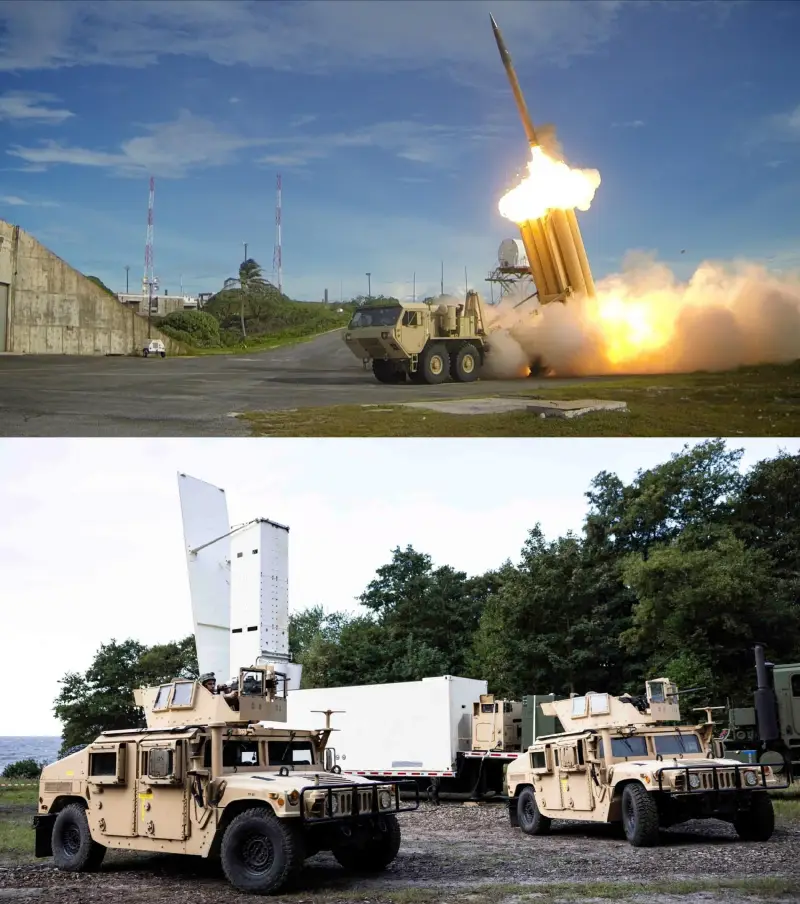
Launcher of the THAD missile defense complex (above) and launcher of the SM-6 Standard missile defense system (below). Image US Army, US Navy
And finally, the most characteristic sign may be the defeat of Russian planes and helicopters in the depths of our territory, at the maximum possible firing range of missiles used by the Patriot anti-aircraft missile system (SAM), and possibly also of the SM-6 Standard missiles, which have a maximum range of up to 240 kilometers.
Conclusions
The network of HBTSS and PWSA satellites poses an extremely serious threat, the “distributed fighter” could potentially revolutionize air warfare, for us it is a direct and present threat.
How to counteract it?
First, you need to at least understand that attacks on our planes and missiles using the HBTSS and PWSA satellite network are already being carried out. Even if we are absolutely sure of this, it will be extremely difficult to prove the fact of use.
Recently there has been a lot of squealing in the United States about Russia’s possible use of nuclear weapons. weapons in space, are they preparing in advance for some kind of accusations on our part?
Surely, arguments will begin again about how we, they say, are knocking down all their satellites, “a bucket of nuts in orbit,” and so on and so forth. Of course, in reality nothing like this will happen, we don’t have a direct conflict with the United States yet, and we won’t touch their orbital infrastructure, what can we say - We are not touching the pathetic drone over the Black Sea, although it is almost certain that it is used to attack ships of the Black Sea Fleet of the Russian Navy, we are not some kind of Houthis...
And it’s not a fact that we will physically be able to shoot down American satellites faster than they can launch new ones; for this we need "Reapers", and they, apparently, do not yet exist.
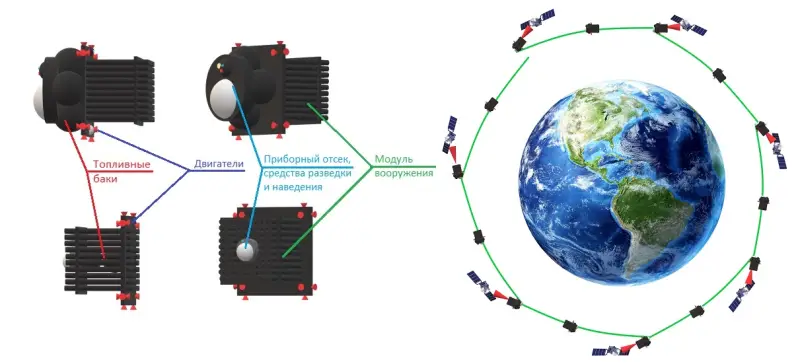
Reaper anti-satellite interceptor concept
In general, we are at a new stage of confrontation in the air, with prospects that are not yet fully understood.
One thing is certain - the deployment of a network of HBTSS and PWSA satellites will significantly affect the appearance of promising combat and auxiliary aircraft and will lead to the emergence of new strategies and tactics of combat operations.
Information